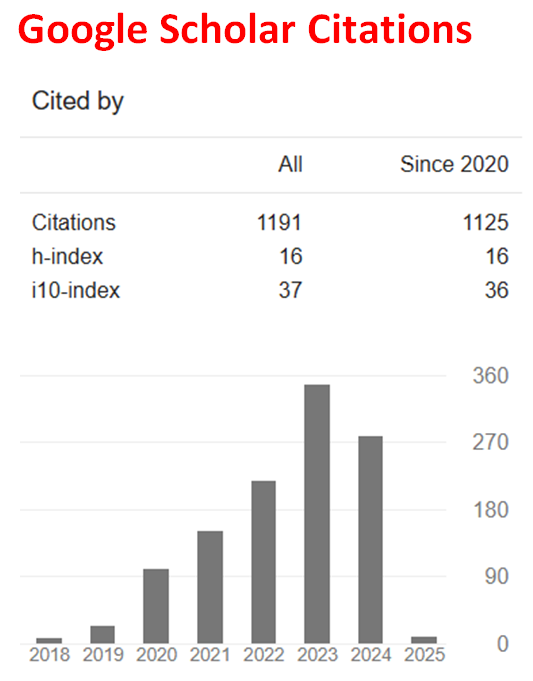Optimal Debt Ratio and Investment-Consumption Strategies with Taxation in the Presence of Jump Risks
Abstract
This paper derives an optimal debt ratio, consumption rate and investment strategies with taxation for an investor who invest under four background risks: investment, taxation, income and jump risks. The underlying assets considered in this paper are a riskless and risky asset. The risky asset is assumed to follow a jump-diffusion process. We also assume that the income growth rate and tax payment of the investor follow a jump-diffusion process. The aim of the investor is to derive the wealth-after-tax process. The wealth-after-tax process of the investor is taken to be the difference between the wealth-before-tax and the tax payment processes of the investor. The resulting wealth-after-tax process of the investor was solved using dynamic programming approach. As a result, we derive the optimal investment strategies, optimal debt ratio and optimal consumption rate for the investor over time by assuming that the investor chooses a power utility function. The optimal investment strategies were found to involve four components: a speculative portfolio, a tax risks hedging portfolio strategy, an income growth rate risks hedging portfolio strategy and a risk-free fund that holds only the riskless asset. Interestingly, we found that before loan is taken or given, the following must be considered: interest rate on loan to be taken or given, the nominal interest rate, income growth rate, coefficient of the investor willingness to bear the risk of taking debt. We also found that as the income growth rate of the investor increases, the debt profile of the investor decreases. We observe that as the coefficient of risk aversion with respect to debt ratio tends to unity, the amount of debt will be unbearable. It was also observed that the higher an investor willingness to bear the risk of taking debt, the smaller the optimal debt ratio of the investor over time. We further found that when tax rate increases, consumption rate decreases and vice versa. To ascertain the validity of our models, data were collected from six companies in Nigerian Stocks Exchange, and SPSS package was used to analyze the data. Some empirical results were obtained in this paper, using MATLAB software.
References
Ait-Sahalia, Y., Cacho-Daiz, J., & Hurd, T. R. (2009). Portfolio choice with jumps: A closed-form solution. Annals of Applied Probability, 19(2), 556-584. https://doi.org/10.1214/08-AAP552
Ait-Sahalia, Y., Cacho-Daiz, J., & Laeven, R. J. A. (2015). Modeling financial contagion using mutually exciting jump processes. Journal of Financial Economics. http://dx.doi.org/10.1016/j.jfineco.2015.03.002
Bakshi, G., Cao, C., & Chen, Z. (1997). Empirical performance of alternative option pricing models. Journal of Finance, 52, 2003-2049. https://doi.org/10.1111/j.1540-6261.1997.tb02749.x
Dai, M., Liu, H., Yang, C., & Zhong, Y. (2015). Optimal tax timing with asymmetric long-term/short-term capital gains tax. Review of Financial Studies, 28, 2687-2721. https://doi.org/10.1093/rfs/hhv024
Dammon, R. M., Spatt, C. S., & Zhang, H. H. (2004). Optimal asset location and allocation with taxable and tax-deferred investing. Journal of Finance, 59. https://doi.org/10.1111/j.1540-6261.2004.00655.x
Das, S. R., & Uppal, R. (2004). Systemic risk and international portfolio choice. Journal of Finance, 59, 2809-2834. https://doi.org/10.1111/j.1540-6261.2004.00717.x
Eraker, B. (2004). Do stock prices and volatility jump? Reconciling evidence from spot and option prices. Journal of Finance, 59, 1367-1403. https://doi.org/10.1111/j.1540-6261.2004.00666.x
Jin, Z. (2014). Optimal debt ratio and consumption strategies in financial crisis. Journal of Optimization Theory and Applications. https://doi.org/10.1007/s10957-014-0629-0
Jin, Z., Yang, H., & Yin, G. (2015). Optimal debt ratio and dividend payment strategies with reinsurance. Insurance: Mathematics and Economics, 64, 351-363. https://doi.org/10.1016/j.insmatheco.2015.07.005
Krouglov, A. (2013). Simplified mathematical model of financial crisis. MPRA Paper No. 44021, 2-11. https://doi.org/10.2139/ssrn.2207704
Levaggi, R., & Menoncin, F. (2016). Optimal dynamic tax evasion: A portfolio approach. Journal of Economic Behavior and Organization, 124, 115-129. https://doi.org/10.1016/j.jebo.2015.09.003
Liu, W., & Jin, Z. (2014). Analysis of optimal debt ratio in a Markov regime-switching model. Working paper, Department of Finance, La Trobe University, Melbourne, Australia.
Liu, J., Longstaff, F. A., & Pan, J. (2003). Dynamic asset allocation with event risk. Journal of Finance, 58, 231-259. https://doi.org/10.1111/1540-6261.00523
Marekwica, M. (2012). Optimal tax-timing and asset allocation when tax rebates on capital losses are limited. Journal of Banking and Finance, 36, 2048-2063. https://doi.org/10.1016/j.jbankfin.2012.03.011
Lee, S. S., & Mykland, P. A. (2007). Jumps in financial markets: A new nonparametric test and jump dynamics. Review of Financial Studies, 21, 2535-2563. https://doi.org/10.1093/rfs/hhm056
Nkeki, C. I. (2018). Optimal investment risks and debt management with backup security in a financial crisis. Journal of Computational and Applied Mathematics, 338, 129-152. https://doi.org/10.1016/j.cam.2018.01.032
Nkeki, C. I. (2018). Optimal pension fund management in a jump diffusion environment: Theoretical and empirical study. Journal of Computational and Applied Mathematics, 330, 228-252. https://doi.org/10.1016/j.cam.2017.07.018
Nkeki, C. I., & Modugu, K. P. (2020). Optimal investment in the presence of intangible assets and collateralized optimal debt ratio in jump-diffusion models. Mathematics and Financial Science, 14, 309-334. https://doi.org/10.1007/s40096-020-00343-8
Nyuyen, T. H. (2016). Optimal investment and consumption with downside risk constraint in jump-diffusion models. arXiv:1604.05584v1 [q-fin.MF].
Qian, L., Chen, L., Jin, J., & Wang, R. (2018). Optimal liability ratio and dividend payment strategies under catastrophic risk. Journal of Industrial and Management Optimization, 14(4), 1443-1461. https://doi.org/10.3934/jimo.2018015
Stein, J. L. (2013). Stochastic optimal control modeling of debt crises. CESifo Working Paper No. 1043.
Ma, Y., Shan, S., & Xu, W. (2019). Optimal investment and consumption in the market with jump risk and capital gains tax. Journal of Industrial and Management Optimization, 15(4), 1937-1953. https://doi.org/10.3934/jimo.2018130
Zhao, Q., Jin, Z., & Wie, J. (2018). Optimal investment and dividend payment strategies with debt management and reinsurance. Journal of Industrial and Management Optimization, 14(4), 1323-1348. https://doi.org/10.3934/jimo.2018009
Zhu, D., Chen, C., & Liu, B. (2023). Optimal debt ratio and dividend payment policies for insurers with ambiguity. Mathematics, 12(1), 40. https://doi.org/10.3390/math12010040
Zou, J., Zhang, Z., & Zhang, T. (2009). Optimal dividend payment under jump-risk process stochastic models. Journal of Computational Finance, 25, 332-347. https://doi.org/10.1080/15326340902870133
Nigeria Stock Exchange (NSE). (2021). Sapele Road, Benin City, Edo State, Nigeria.

This work is licensed under a Creative Commons Attribution 4.0 International License.
.jpg)

